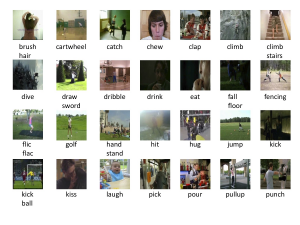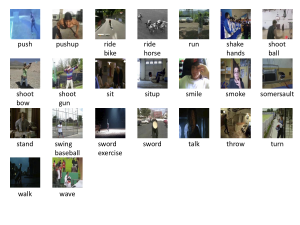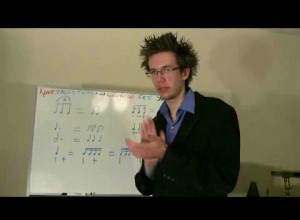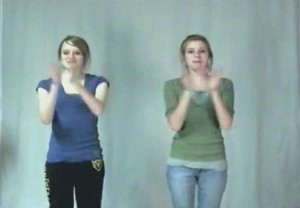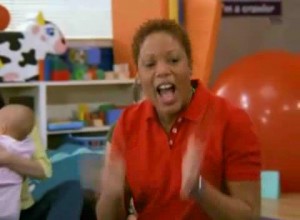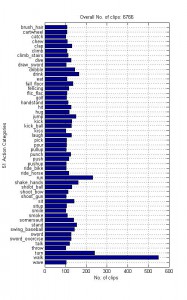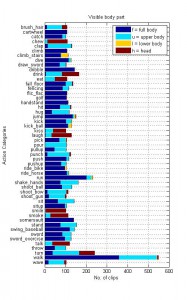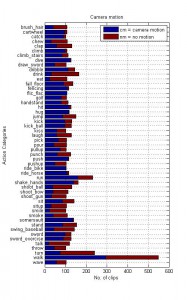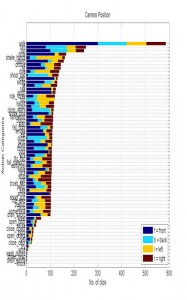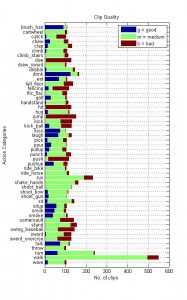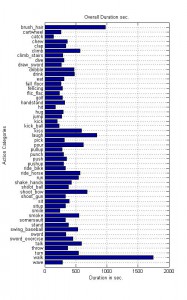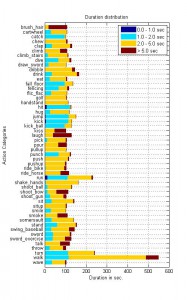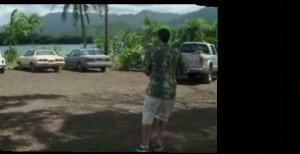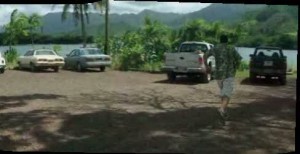HMDB: a large human motion database
Evaluation
Download
Illustration of the 51 Actions
Introduction
Citation
Dataset
Other action recognition benchmark
About the page
Evaluation
Current benchmarks provided by actionrecognition.net:
Download
Video Database
- HMDB51 – About 2GB for a total of 7,000 clips distributed in 51 action classes.
- Stabilized HMDB51 – the number of clips and classes are the same as HMDB51, but there is a mask in [video_name].form associated with each clip. The mask file is readable in matlab.
- README
- bounding boxes (link to INRIA)
HOG/HOF (STIP) features
- STIP features for the HMDB51 – ~3.5GB, (for the binaries see http://www.irisa.fr/vista/Equipe/People/Laptev/download.html )
- STIP features for the stabilized HMDB51 – ~ 2.9GB
Three splits

HMDB by H. Kuehne, H. Jhuang, E. Garrote, T. Poggio, T. Serre is licensed under a Creative Commons Attribution 4.0 International License.
Based on a work at http://serre-lab.clps.brown.edu/resource/hmdb-a-large-human-motion-database/.
Code
C2 benchmark: https://github.com/hueihan/Action_Recognition or Install git and do git clone git://github.com/hueihan/Action_Recognition.git
Illustration of the 51 Actions
Introduction
With nearly one billion online videos viewed everyday, an emerging new frontier in computer vision research is recognition and search in video. While much effort has been devoted to the collection and annotation of large scalable static image datasets containing thousands of image categories, human action datasets lack far behind. Here we introduce HMDB collected from various sources, mostly from movies, and a small proportion from public databases such as the Prelinger archive, YouTube and Google videos. The dataset contains 6849 clips divided into 51 action categories, each containing a minimum of 101 clips. The actions categories can be grouped in five types:
- General facial actions smile, laugh, chew, talk.
- Facial actions with object manipulation: smoke, eat, drink.
- General body movements: cartwheel, clap hands, climb, climb stairs, dive, fall on the floor, backhand flip, handstand, jump, pull up, push up, run, sit down, sit up, somersault, stand up, turn, walk, wave.
- Body movements with object interaction: brush hair, catch, draw sword, dribble, golf, hit something, kick ball, pick, pour, push something, ride bike, ride horse, shoot ball, shoot bow, shoot gun, swing baseball bat, sword exercise, throw.
- Body movements for human interaction: fencing, hug, kick someone, kiss, punch, shake hands, sword fight.
Citation
The benchmark and database are described in the following article. We request that authors cite this paper in publications describing work carried out with this system and/or the video database.
H. Kuehne, H. Jhuang, E. Garrote, T. Poggio, and T. Serre. HMDB: A Large Video Database for Human Motion Recognition. ICCV, 2011.PDF Bibtex
The first benchmark STIP features are described in the following paper and we request the authors cite this paper if they use STIP features.
I. Laptev, M. Marszalek, C. Schmid, and B. Rozenfeld. Learning Realistic Human Actions From Movies. CVPR, 2008. PDF
The second benchmark C2 features are described in the following paper and we request the authors cite this paper if they use C2 codes.
H. Jhuang, T. Serre, L. Wolf, and T. Poggio. A Biologically Inspired System for Action Recognition. ICCV, 2007. PDF
Dataset, meta labels, statistics and stabilization
Meta labels
In addition to the label of the action category, each clip is annotated with an action label as well as a meta-label describing the property of the clip. Because HMDB51 video sequences are extracted from commercial movies as well as YouTube, it represents a fine multifariousness of light conditions, situations and surroundings in which the action can appear, captured with different camera types and recording techniques such as points of view. The point of view is another criterion of subdivision the HMDB supports. For an all-around coverage the perspectives frontal, lateral (right and left) and backwards view of motions are distinguishable. In addition we have two distinct categories namely “no motion” and “camera motion”. The later is the result of zooming, traveling shots and camera shaking, etc. A 3 level grading of video quality is applied to evaluate the large set of clips. Only those video samples are rated “good” which have the quality that you can identify the single fingers during the motion. Those which do not meet this requirement are either rated “medium” or “bad” if body parts or limbs vanish while the action is executed. Below you can find examples for each of the grades to show the differences.
| Property | Labels (abbreviation) |
|---|---|
| visible body parts | head(h), upper body(u), full body (f), lower body(l) |
| camera motion | motion (cm), static (nm) |
| camera viewpoint | Front (fr), back (ba), left(le), right(ri) |
| number of people involved in the action | Single (np1), two (np2), three (np3) |
| video quality | good (goo), medium (med), ok (bad) |
Statistics
Video Stabilization
One major challenge associated with the use of video clips extracted from real-world videos is the potential presence of significant camera/background motion, which is assumed to interfere with the local motion computation and should be corrected. To remove the camera motion, we used standard image stitching techniques to align frames of a clip. These techniques estimate a background plane by detecting then matching salient features in two adjacent frames. Correspondences of two frames are computed using a distance measure that includes both the absolute pixel differences and the Euler distance of the detected points. Points with a minimum distance are then matched and the RANSAC algorithm is used to estimate the geometric transformation between all neighbor- ing frames (independently for every pair of frames). Using this estimate, the single frames are warped and combined to achieve a stabilized clip.
Other action recognition benchmark
The effort was initiated at KTH: the KTH Dataset contains six types of actions and 100 clips per action category. It was followed by the Weizmann Dataset collected at the Weizmann Institute, which contains ten action categories and nine clips per category. Above two sets were recorded in controlled and simplified settings. Then the first realistic-action dataset collected from movies and annotated from movie scripts is made in INRIA; the Hollywood Human Actions Set contains 8 types of actions, and the number of clips per action class varies between 60 – 140 per class. Its extended version, Hollywood2 Human Actions Set offers a total of 3669 videos distributed over ten classes of human actions under ten types of scenarios. The UCF group has also been collecting action datasets, mostly from YouTube. There are UCF Sports featuring 9 types of sports and a total of 182 clips, UCF YouTube containing 11 action classes, and UCF50 contains 50 actions classes. We will show in the paper that videos from YouTube could be very biased by low-level features, meaning low-level features (i.e., color and gist) are more discriminative than mid-level fears (i.e., motion and shape).
| Dataset | Year | # Actions | # Clips per Action |
|---|---|---|---|
| KTH | 2004 | 6 | 10 |
| Weizmann | 2005 | 9 | 9 |
| IXMAS | 2006 | 11 | 33 |
| Hollywood | 2008 | 8 | 30-140 |
| UCF Sports | 2009 | 9 | 14-35 |
| Hollywood2 | 2009 | 12 | 61-278 |
| UCF YouTube | 2009 | 11 | 100 |
| MSR | 2009 | 3 | 14-25 |
| Olympic | 2010 | 16 | 50 |
| UCF50 | 2010 | 50 | min. 100 |
| HMDB51 | 2011 | 51 | min. 101 |
About the page
Contact
For questions about the datasets and benchmarks, please contact Hueihan Jhuang ( hueihan.jhuang [at] tuebingen.mpg.de).
Log
- 19/11/2013 update the evaluation page with more benchmarks
- 22/04/2013 update the evaluation page with more benchmarks
- 12/03/2012 second version of the web page, update the evaluation with more benchmarks
- 10/25/2011 add readme for the stabilized videos
- 09/24/2011 add readme for the three splits and reference to HOG/HOF
- 09/01/2011 upload images for statistics, clip, three splits, HOG/HOF features
- 07/29/2011 first version of the web page
- Databases
- ClickMe
- The multi-cue boundary detection dataset
- HMDB: a large human motion database
- The Breakfast Actions Dataset

